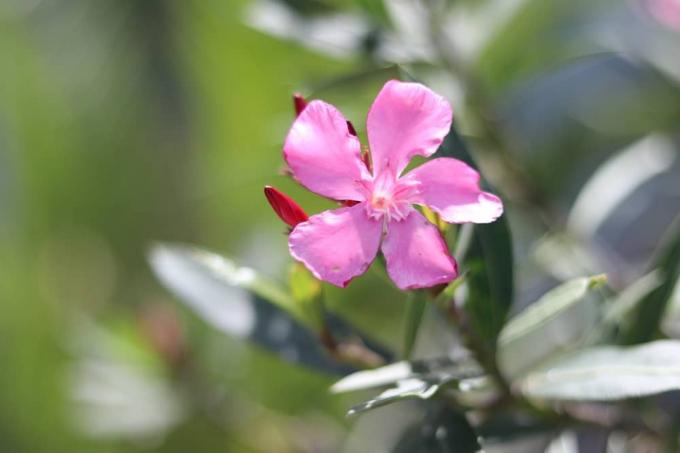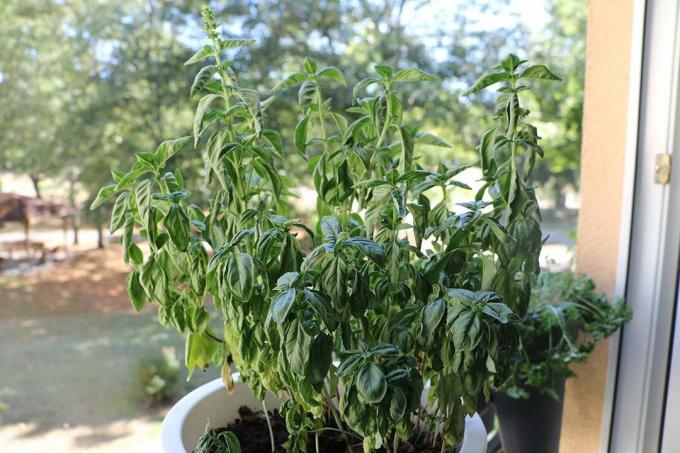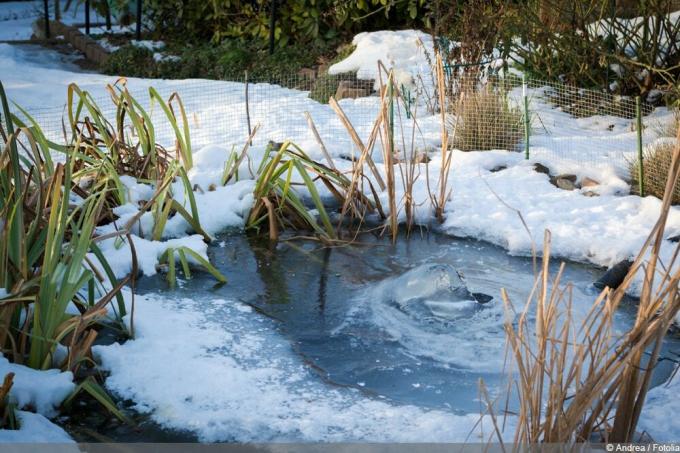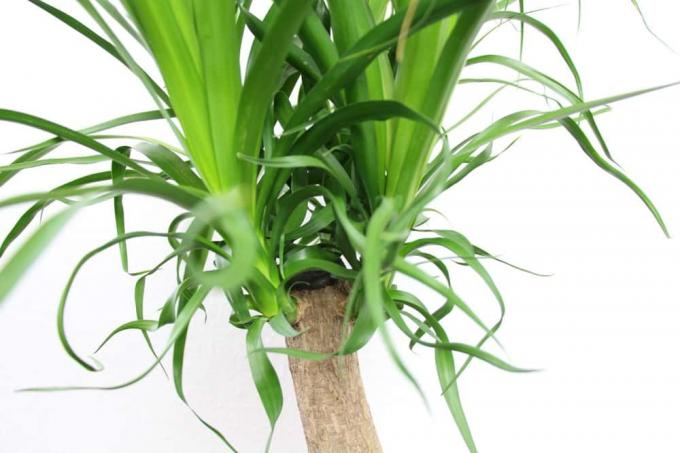

Table of contents
- Sensitive southerner - conditionally hardy
- Make preparations for the cold season
- The right time to move to winter quarters
- Hibernate indoors: temperature and exposure
- Dangers of wintering indoors
- Overwintering oleanders outdoors - possible in selected regions
- Winter hardy outdoors - protection for oleander plants
- Winter care of the oleander - undemanding outdoors
- Higher care requirements in indoor winter quarters
- Complete the hibernation period optimally
- Conclusion
Graceful, colorful and exuding an intoxicating fragrance – the oleander is one of the most popular ornamental plants and inspires hobby gardeners time and time again. But when, towards the end of September, the flowering period of the popular southern plant is coming to an end, the decisive question arises: How is the plant overwintered properly? If you take the most important needs of the plant into account here, you can look forward to the lush and colorful flowers of the Mediterranean plant in the following year.
Sensitive southerner - conditionally hardy
As a Mediterranean plant that is widespread throughout the Mediterranean area and in its natural form as well Found in parts of Morocco, southern Spain, parts of China and India, the oleander loves warm weather temperatures. Nevertheless, the plant is considered robust and tolerates light frosts; because it is conditionally hardy, but not completely winter-proof, the southern plant can withstand temperatures down to minus 5°C without being damaged. If you want to spend the winter, you should always consider the following points:
- depending on the location, the selection of an inner or outer quarter
- the right lighting
- the optimal temperature
- comprehensive care measures
- the right time to end the hibernation
Make preparations for the cold season
If you want to get your oleander, which is not completely winter-proof, successfully through the cold season, you should first take some measures to make the plant more resilient. Cleaning the plant is particularly important; this removes old, dead flowers and leaves that could have a detrimental effect on a successful overwintering. In this context, the surface of the root ball should also be freed from weeds at the same time.
Pest control is particularly important and should be done very carefully. Even small numbers of aphids or spider mites must be removed immediately and preferably destroyed with appropriate pesticides. Even if only a few lice can be seen at first, they can become attached to the pests multiply explosively in favorable conditions in the winter quarters and permanently damage the plant inflict
If several plants are to be overwintered in the selected winter quarters, the plant should also be slightly pruned; in this way, a lack of space is prevented, which can encourage pest infestation. With this pruning, shoots that are too long or bare are removed close to the ground. However, if there is enough space, it is better to cut back in spring.
The right time to move to winter quarters
The point in time at which the oleander begins to overwinter also plays an important role. Basically, the longer the plant stays outdoors, the more robust it becomes; this means increased resilience that will pay off during the winter. The cool air affects the pests.
For example, scale insects have no chance to reproduce and die off. As long as no severe frosts are to be expected, the southerner feels comfortable outdoors. It has proven useful to place the plant close to the house during this period and, if necessary, to wrap it in a thin layer of fleece.
Hibernate indoors: temperature and exposure

When the first severe frost approaches, it is time for the oleander to move to its winter quarters. The plant feels at home in different places during the cold season:
- in a cold house
- in the unheated stairwell
- in the greenhouse
- in unheated adjoining rooms
- in the winter tent
- in the cold conservatory
- in the basement
- in the garage
When choosing the winter quarters, it is important to consider the location factors; so the plant should also get a bright place in winter. This criterion is met above all when you spend the winter in a cold house or in a cold conservatory. If the unheated stairwell is chosen as winter quarters, make sure that it is close to a window. If you have to switch to the basement or the garage, the lighting conditions are usually less favourable; then it is necessary to adjust the winter temperature accordingly.
Tip:
Basically, the darker the winter quarters, the lower the temperatures must be.
The plant should be placed during the cold season at temperatures between two and ten degrees Celsius. If the temperatures are higher, there is a risk of infestation with pests.
Alternatively, the lighting in the winter quarters can also be optimised. With the help of a cold-white fluorescent tube, the oleander is optimally supplied with light. Anyone considering artificial lighting should also consider using a lux meter to control light energy. If the plant overwinters at temperatures between 5 and 10°C, 1500 lx is optimal.
At higher temperatures, more intensive lighting is required, which can be up to 3000 lx. However, permanent lighting should be avoided; the plant should be exposed to artificial light for a maximum of 10 hours a day. In addition, the day-night cycle must be observed.
Dangers of wintering indoors
Anyone who puts the oleander into the interior of the house during the cold season must think of certain dangers - both for the plant itself and for the roommates. The main dangers of overwintering the crop protected include pest infestation, mold and certain diseases; The following stresses in particular cause problems for the oleander in winter:
- aphids
- spider mites
- scale insects
- oleander crab
In addition to choosing the optimal location, measures for good ventilation of the winter quarters and weekly checks for pest infestation also help preventively. If the plant is already infested, countermeasures should be taken quickly; products based on potash soap or rapeseed oil are available to combat pests. Oleander canker, which is caused by a bacterium, can only be controlled by cutting out the affected areas.
If you overwinter your oleander indoors, you should also remember that it is a poisonous plant. All parts of the plant contain the glycoside oleandrin, which is one of the toxic heart glycosides and must never be consumed. Animals and small children should therefore not get close to the plant.
Overwintering oleanders outdoors - possible in selected regions

Oleander is conditionally hardy but not fully hardy. However, since it easily withstands light frosts, it can also spend the winter outdoors; however, this only works in regions with mild winters where no severe frosts are to be expected. In Germany, this includes the following regions:
- the Ruhr region
- the coastal regions of the North Sea (including islands)
- the Lower Rhine
- the Moselle valley
- the Rhine-Main area
Winter hardy outdoors - protection for oleander plants
Hibernation outdoors can take place at different locations; the balcony or terrace, which are sufficiently sheltered, is particularly popular. The oleander is placed in a large planter and then isolated. In order to achieve optimal floor insulation, the container can be placed on a styrofoam plate, for example. However, the terrace is often also a popular place for other plants that are either hardy or only partially hardy; In order to save space, it has therefore proven useful to tie the branches of the oleander together with a sisal cord.
The entire tub is then wrapped in bubble wrap; alternatively, a thick coconut mat can also be used. The leaves and shoots also need protection; this works best with an air-permeable hood made of synthetic fleece. Sackcloth has also proven its worth. However, completely airtight foils should not be used, as this can lead to mold infestation and rot.
Basically, it has proven useful to first attach the bucket protection and only a few weeks later to winterize the leaves and shoots; This prevents a premature warm and humid climate in this area that promotes the development of mold. The plant is then still "hardy" in time.
When overwintering the oleander outdoors, it is also important to ensure that the plant gets a sheltered location; a place directly on the wall of the house is ideal; the balcony or terrace offers the advantage of an additional roof. Then the crop is optimally protected not only from the cold, but also from moisture.
Tip:
It has proven useful to place several tubs next to each other so that the plants can warm each other. If very severe frosts are announced, the bucket is temporarily moved to the garage.
Winter care of the oleander - undemanding outdoors
If the oleander is overwintered outdoors, it will hibernate. Then the overall care requirements are low. However, it is important that the winter protection is removed from time to time to ensure regular ventilation. Mold and moisture accumulation should then no longer be a problem. Otherwise, the following aspects must be taken into account:
- Don't water
- Protect from moisture
- Don't add any nutrients
- Check winter protection in the bucket area weekly
Higher care requirements in indoor winter quarters

If the Mediterranean plant is overwintered indoors, the care measures must be extended. Above all, regular inspection of the plant for pests is important, as there are favorable living conditions for scale insects, spider mites and the like in the winter quarters. Due to the dry air, they can multiply explosively. As a preventive measure, the crop should be sprayed with water more often.
Because the temperatures in the winter quarters are higher than outdoors, the oleander must be supplied with water from time to time. To determine if the plant needs moisture, the top half of the soil needs to be checked; if this is dry, it can be watered. This check works particularly well with the help of a moisture meter, the long probe of which can be inserted deep into the earth.
Complete the hibernation period optimally
When the winter phase ends for the Mediterranean plant depends on various factors:
- from the weather conditions
- on the type of hibernation
- of individual space requirements
If the oleander has been allowed to hibernate outdoors, ending the hibernation period is particularly easy; in this case – depending on the weather – only protective fleece, coconut mats and styrofoam panels have to be removed. If the plant has been indoors during the cold season with temperatures up to a maximum of 10°C, it can be outdoors again in April.
Then it is still partly hardy, so that it tolerates light night frosts and low temperatures well. However, if the Mediterranean plant has been overwintered in a warm room, the move to the new home may only take place after the ice saints. Such plants have already formed new shoots in the winter quarters, which are then very vulnerable to frost.
It is important to gradually acclimate the plants to outdoor conditions. It has proven useful to put them in a shady place for the first few days and only gradually increase the incidence of light. Then there are other maintenance measures; so should both repotting and pruning. Now there is also sufficient watering, because the changed climatic conditions are causing the oleander root ball to dry out quickly. The winter time finally ends when the crop is fertilized again in early spring for the first time.
Conclusion
Successful overwintering of the oleander is not complicated. If you pay attention to site conditions and care measures, you can get the plant through the winter and look forward to the colorful flowers next year.
 garden editorial
garden editorial I write about everything that interests me in my garden.
Learn more about overwintering plants

How much frost do horned violets tolerate?
Horned violets are a popular bedding plant that survives the winter. They are planted either in spring or in autumn and overwinter in the beds. They usually do without frost protection, which is why they are also often used as easy-care plants for graves.

Is the dragon tree hardy? 7 tips for wintering
Dracaena, the botanical name of the dragon tree, is not just coincidentally reminiscent of a palm tree. Like the palm trees, it also likes it warm and sunny. He is not hardy and has to hibernate in the house. Here are some tips.

Are asters hardy? 5 tips for wintering
The summer aster and the autumn aster not only differ in their flowering time. When winter arrives, another difference becomes apparent: one dies, the other survives the frost.

Overwintering basil: 7 tips for caring for it in winter
If you want to enjoy fresh basil in winter, you can overwinter it with a little skill. With these 7 tips you will definitely succeed!

Overwintering pond plants | Aquatic plants in winter
The garden pond is an important design element in the garden for many hobby gardeners. With the right pond plants, it draws everyone's attention. The numerous species differ in their appearance, their planting location on or in the pond and, last but not least, their winter hardiness.

Overwintering Yucca Palm - Is It Hardy?
Although yucca palms are indoor plants, they like to be outdoors in the summer. However, most species are not hardy. It is necessary to winter them indoors. You can find out how to do this here.



